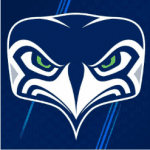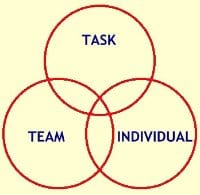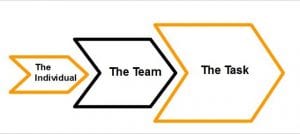
In a preview of what some have suggested will be the NFC Conference Championship showdown in January, the opening game of the 2017 pro football season for the Seattle Seahawks and the Green Bay Packers was played out in something other than the frozen tundra and arctic temps of Wisconsin’s historically unwelcoming Lambeau Field.
On this particular day, the sun was out, the sky was blue, and visibility was as far as the eye could see. In this case, Seahawks fans could peer all the way down to Nashville, Tennessee, where a beloved, former running back, Marshawn “Beast Mode” Lynch, had re-emerged from retirement to take the field for the Oakland Raiders. Marshawn managed to rack up 76 yards on 19 carries in his first game back, more than any Seahawk, (pre-retirement), could muster on opening Sunday.
In their mind’s eye, however jaundiced, Seahawks fans could also glimpse the future of the new season that was about to unfold. Oddly, it looked an awful lot like the last one — a slightly “out of focus” sequel to two Super Bowl appearances. Weren’t we going to do something about the “O-line” problem that was our Achille’s heel? Have we found a running back who can avoid injury for longer than 2-3 games? Or does the Seahawk system create unnecessary risks for backs in the run game?
Augmented Reality
What is odd about watching the Seattle Seahawks could be best described by Seattle radio sportscaster, Mike Salk, who put it this way: “The Hawks don’t look like, or play like, any other NFL team.” The play action often stutters, like a piece of film, its sprockets caught in the projector. You hear more whistles and see more flags thrown than at a Balkan wedding. Penalties are handed out like Kleenex at a funeral.
“That’s because the Seahawks put so much emphasis on defense,” explains Brock Huard, the other half of the Brock and Salk show on ESPN Radio Seattle, 710-AM.
After the post-game shows, you get the funny feeling that what you were watching wasn’t actual reality but augmented reality seen through the filter of a mesmerizing coach. Pete Carroll may possess the ability to create the same “reality distortion field” as the legendary Steve Jobs.
The “reality checks” in the Seahawk’s case involve some pretty steep salaries on the payroll. It all comes down to ROI. While the Seattle defense is stacked with pro-bowl veterans, it is heavily taxed, remaining on the field in the opener for twice as long as the offense.
The newly-added, $4 million running back, Eddie Lacy, was poised like a Samurai ready to pounce, but he had no where to go since the offensive line created no holes for him to run through.
Watching Lacy, one couldn’t help wondering whether Marshawn Lynch may have left Seattle because he, too, had no room to maneuver in an offensive scheme where he was expected to be the bulldozer rather than the bull. In the bullfighting ring, the bulls will dance with the matador if there is legroom. Lacy gained a total of 3 yards this game, or the distance between his stance and the O-line. And the Seahawk’s “O-Line” is so predictable, every team can read it like a primer.
Likewise, Seattle’s $40-million man, tight-end Jimmy Graham, was another hawk whose wings were clipped. At 6’7” Jimmy is built to catch passes that go over the heads of defenders, not to lower his shoulders and become the roaming offensive blocker on nearly every play.
And then there is the $87.6 million dollar man, quarterback Russell Wilson, who the Seahawks seem to have no problem exposing to the blitzing marauders of the opposing team. Wilson may soon be diagnosed with battered quarterback syndrome. That would seem to squander Paul Allen’s billion dollar investment in team and field.
All of which leads us to an inescapable conclusion. The Seahawks offense appears not only to be unable to execute, but to leverage the talent the team has assembled, to enable each star to play to his fullest potential.
That is the fault of exactly three people, all of them coaches: #1.) offensive “ coordinator” Darren Bevel, offensive line coach, #2.) Tom Cable, and, penultimately, #3.) the head coach, Pete Carroll. Team general manager, John Schneider, is an enabler in keeping Bevel and Cable around.
There is a parallel in our business community that illustrates another game plan. It is one of the ways that Amazon, Inc. has redefined team dynamics.
In the classical, three-ringed Action Centered leadership model, the relationship between the task, team and individual are set out using 3 interlocking circles. Achieving the balance between the 3 elements is the key to success. But notice that the intersection of all three circles, when one is balancing the interests of team, individual and task is actually the very smallest piece of the pie.
Perhaps the more straightforward approach can do more than get our Amazon packages delivered on time. Perhaps it can deliver the pigskin into the End Zone from the Red Zone for a touchdown (the Hawks were thwarted twice from inside the five-yard line during the season opener).
The Seahawks have created another way to foster team unity. They call it “Tell the Truth Mondays,” a day when players are encouraged to speak freely and get any frustrations or problems off their chests. Sort of a Scrum session for ballers!
Do better! Get Agile! Go Hawks! [24×7]






















